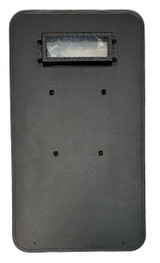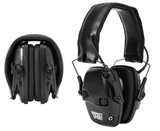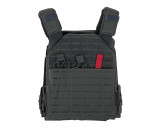How to Measure for Armor Sizing
How to Measure for Armor Sizing
When it comes to personal protection, armor sizing is an essential aspect that can significantly impact both comfort and effectiveness. Whether you're preparing for tactical operations or seeking protection for everyday use, understanding how to properly measure for armor is vital. In this guide, we will walk you through everything you need to know about armor sizing, including different types of armor, the factors to consider, and expert advice from Battle Steel to ensure a perfect fit.
Understanding the Different Types of Armor
Armor is designed to protect the wearer from a variety of threats, and selecting the right type of armor depends on the potential risks involved. There are several types of armor, including soft armor, hard armor, and plate carriers. Each type serves a specific purpose and offers distinct levels of protection.
Soft Armor: Soft armor, typically made from materials like Kevlar or other synthetic fibers, is designed to protect against handgun rounds and shrapnel. It's lightweight, flexible, and comfortable to wear, making it ideal for situations where mobility is key. However, it doesn't provide protection against higher-caliber ammunition or blunt trauma, making it unsuitable for more extreme combat scenarios.
Hard Armor: Hard armor, which includes steel, ceramic, or composite plates, offers protection against high-velocity rounds, including rifle bullets. This type of armor is heavier and less flexible than soft armor but provides a higher level of protection. It is typically used in more dangerous combat environments, where the threat of rifle fire is higher.
Plate Carriers: Plate carriers are designed to hold hard armor plates securely in place. These are often adjustable to accommodate different sizes and are used in conjunction with soft armor for optimal protection. Plate carriers are highly versatile and can be customized with additional pouches and accessories for carrying gear.
Each armor type has its own pros and cons. While soft armor offers mobility, it lacks the protection of hard armor against rifle rounds. Conversely, hard armor provides superior protection but at the cost of added weight and reduced mobility. Understanding the differences will help you choose the best protection for your needs.

Key Measurements for Armor Sizing
Measuring for armor sizing isn't a one-size-fits-all approach. Armor must fit well to be effective, so getting the right measurements is critical. Here are the key measurements you'll need to take:
Chest Measurement: Measure around the fullest part of your chest, keeping the tape level across your back and under your arms. This measurement will help determine the size of your soft armor vest or plate carrier, ensuring a snug yet comfortable fit.
Waist Measurement: For body armor with waist adjustments, measure around your natural waistline. Some plate carriers come with adjustable waist straps, so it's essential to take this measurement to ensure the armor stays securely in place.
Torso Length: The torso length is an important measurement when selecting plates for your plate carrier. Stand upright, and have someone measure from the top of your shoulder to the waistline. This will ensure that the armor covers your vital organs without being too long or too short.
Shoulder Width: To ensure that the armor fits correctly on your shoulders, measure across the top of your shoulders from one side to the other. This measurement helps to determine the correct fit for straps and the overall alignment of the armor.
Taking these measurements accurately will help you choose armor that fits well and provides optimal protection without restricting your movement.
Expert Advice on Choosing the Right Armor
Choosing the right armor isn't just about picking the first one that fits. Expert advice is crucial in ensuring you make the best choice based on your specific needs. According to Battle Steel experts, the most important factors to consider include the intended use, level of threat protection required, and comfort.
Consider Your Environment: If you're in a high-risk zone, hard armor may be necessary to protect against rifle rounds. However, if you're in a low-risk environment where handguns are the primary threat, soft armor could suffice. Always choose armor that suits the specific threats you're likely to face.
Weight vs. Protection: While harder armor plates offer superior protection, they come with increased weight. If you're going to be wearing armor for extended periods, the added weight could lead to fatigue. Battle Steel experts recommend balancing protection and comfort to avoid compromising your effectiveness.
Customization and Adjustability: Armor that is adjustable and customizable is key for comfort and function. Look for plate carriers that allow for adjustments to the shoulder straps, waist straps, and cummerbunds. This ensures that the armor stays in place and is comfortable during extended use.
Following expert advice ensures that your armor will not only protect you but also allow you to move freely and effectively in any situation.

Armor Types and Features
| Feature | Soft Armor | Hard Armor | Plate Carrier |
|---|---|---|---|
| Protection Level | Handgun and shrapnel | High-velocity rounds | Holds armor plates |
| Weight | Light | Heavy | Varies |
| Flexibility | High | Low | High (with adjustment) |
| Use Case | Everyday carry, security | Military, law enforcement | Tactical operations, military |
| Pros | Comfortable, flexible | Superior protection | Versatile, customizable |
| Cons | Limited protection | Less mobility | Requires additional armor plates |
Frequently Asked Questions
What level of protection do I need for everyday carry? For everyday carry, soft armor provides sufficient protection against most handgun rounds and shrapnel. However, if you're in an environment with a higher risk of rifle fire, you may want to consider a plate carrier with hard armor plates.
How do I ensure my armor is comfortable during long hours of wear? Choose armor with adjustable straps and padding. A well-fitted plate carrier with cushioned shoulder straps and a properly sized waist belt will distribute the weight evenly and prevent discomfort during prolonged use.
Can I use hard armor for everyday carry? Hard armor is heavier and less flexible, making it less suitable for everyday carry. However, it can be useful in high-risk environments where rifle protection is needed.
How often should I replace my armor? Armor should be replaced if it becomes damaged or after it has been exposed to a significant impact. For soft armor, it's recommended to replace it every five years, as the materials may degrade over time.
Is body armor legal to own? Body armor is legal to own in many regions, but laws vary by location. Always check the local regulations in your area before purchasing or wearing body armor.
Conclusion
Measuring for armor sizing and selecting the right type of armor is a critical step in ensuring personal safety and comfort. By understanding the different armor types, key measurements, and expert advice, you can make an informed decision. Whether you need protection for everyday use or tactical operations, Battle Steel offers a wide range of high-quality armor to meet your needs. Visit Battle Steel today for expert advice and top-notch armor solutions.
Recent Posts
-
Understanding Ballistic Shield Ratings and Their Applications
The Trusted Name in Tactical Defense - BattleSteel® When it comes to protecting those who protect us …2025-04-19 -
The Importance of Hearing Protection in Tactical Environments
The Legacy of BattleSteel® BattleSteel® is a trusted name in the world of tactical defense equipment …2025-04-14 -
How to Properly Fit and Wear a Plate Carrier
About BattleSteel and Their Mission BattleSteel is a trusted name in the tactical gear industry, ren …2025-04-11


